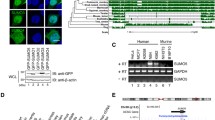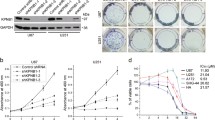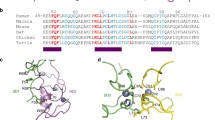Abstract
The functional roles of protein modification by small ubiquitin-like modifier (SUMO) proteins are not well understood compared to ubiquitination. Promyelocytic leukemia (PML) proteins are good substrates for SUMOylation, and PML-nuclear bodies (PML-NBs) may function as a platform for the PML SUMOylation. PML proteins are rapidly modified both with SUMO2/3 and SUMO1 after exposure to arsenite (As3+) and SUMOylated PML are further ubiquitinated and degraded by proteasomes. However, effects of As3+ on SUMO dynamics on PML-NBs are not well investigated. In the present study, we report that (1) the number and size of PML-NBs were regulated by SUMO E1-activating enzyme, (2) SUMO2/3 co-localized with PML irrespective of As3+ exposure and was restricted to PML-nuclear bodies (PML-NBs) via covalent binding in response to As3+, and (3) As3+-induced biochemical changes in PML were not modulated by ubiquitin–proteasome system (UPS) in THP-1 cells. Undifferentiated and differentiated THP-1 cells responded to As3+ similarly and PML proteins were changed from the detergent soluble to the insoluble form and further SUMOylated with SUMO2/3 and SUMO1. ML792, a SUMO E1 inhibitor, decreased the number of PML-NBs and reciprocally increased the size irrespective of exposure to As3+, which itself slightly decrease both the number and size of PML-NBs. TAK243, a ubiquitin E1 inhibitor, did not change the PML-NBs, while SUMOylated proteins accumulated in the TAK243-exposed cells. Proteasome inhibitors did not change the As3+-induced SUMOylation levels of PML. Co-localization and further restriction of SUMO2/3 to PML-NBs were confirmed by PML-transfected CHO-K1 cells. Collectively, SUMOylation regulates PML-NBs and As3+ restricts SUMO dynamics on PML by changing its solubility.







Similar content being viewed by others
References
Alkuraya F, Saadi I, Lund J, Turbe-Doan A, Morton C, Maas R (2006) SUMO1 haploinsufficiency leads to cleft lip and palate. Science 313(5794):1751. https://doi.org/10.1126/science.1128406
Au W, Tam S, Fong B, Kwong Y (2008) Determinants of cerebrospinal fluid arsenic concentration in patients with acute promyelocytic leukemia on oral arsenic trioxide therapy. Blood 112(9):3587–3590. https://doi.org/10.1182/blood-2008-06-161000
Baczyk D, Audette M, Drewlo S, Levytska K, Kingdom J (2017) SUMO-4: a novel functional candidate in the human placental protein SUMOylation machinery. PLoS One 12(5):e0178056. https://doi.org/10.1371/journal.pone.0178056
Borden K, Lally J, Martin S, O’Reilly N, Solomon E, Freemont P (1996) In vivo and in vitro characterization of the B1 and B2 zinc-binding domains from the acute promyelocytic leukemia protooncoprotein PML. Proc Natl Acad Sci USA 93(4):1601–1606. https://doi.org/10.1073/pnas.93.4.1601
Bosshart H, Heinzelmann M (2016) THP-1 cells as a model for human monocytes. Ann Transl Med 4(21):438. https://doi.org/10.21037/atm.2016.08.53
Cao J, Yan Q (2012) Histone ubiquitination and deubiquitination in transcription, DNA damage response, and cancer. Front Oncol 2:26. https://doi.org/10.3389/fonc.2012.00026
Cermakova K, Hodges H (2018) Next-generation drugs and probes for chromatin biology: from targeted protein degradation to phase separation. Molecules 23(8):1958. https://doi.org/10.3390/molecules23081958
de The H, Le Bras M, Lallemand-Breitenbach V (2012) The cell biology of disease: Acute promyelocytic leukemia, arsenic, and PML bodies. J Cell Biol 198(1):11–21. https://doi.org/10.1083/jcb.201112044
Evdokimov E, Sharma P, Lockett S, Lualdi M, Kuehn M (2008) Loss of SUMO1 in mice affects RanGAP1 localization and formation of PML nuclear bodies, but is not lethal as it can be compensated by SUMO2 or SUMO3. J Cell Sci 121(Pt 24):4106–4113. https://doi.org/10.1242/jcs.038570
Fu C, Ahmed K, Ding H et al (2005) Stabilization of PML nuclear localization by conjugation and oligomerization of SUMO-3. Oncogene 24(35):5401–5413. https://doi.org/10.1038/sj.onc.1208714
Garvin A, Morris J (2017) SUMO, a small, but powerful, regulator of double-strand break repair. Philos Trans R Soc Lond B Biol Sci 372(1731):20160281. https://doi.org/10.1098/rstb.2016.0281
Golebiowski F, Matic I, Tatham M et al (2009) System-wide changes to SUMO modifications in response to heat shock. Sci Signal 2(72):ra24. https://doi.org/10.1126/scisignal.2000282
Gonzalez-Prieto R, Cuijpers SA, Luijsterburg MS, van Attikum H, Vertegaal AC (2015) SUMOylation and PARylation cooperate to recruit and stabilize SLX4 at DNA damage sites. EMBO Rep 16(4):512–519. https://doi.org/10.15252/embr.201440017
He X, Riceberg J, Soucy T et al (2017) Probing the roles of SUMOylation in cancer cell biology by using a selective SAE inhibitor. Nat Chem Biol 13(11):1164–1171. https://doi.org/10.1038/nchembio.2463
Hendriks IA, Vertegaal AC (2016) A comprehensive compilation of SUMO proteomics. Nat Rev Mol Cell Biol 17(9):581–595. https://doi.org/10.1038/nrm.2016.81
Hendriks IA, D’Souza RC, Yang B, Verlaan-de Vries M, Mann M, Vertegaal AC (2014) Uncovering global SUMOylation signaling networks in a site-specific manner. Nat Struct Mol Biol 21(10):927–936. https://doi.org/10.1038/nsmb.2890
Hirano S (2020) Biotransformation of arsenic and toxicological implication of arsenic metabolites. Arch Toxicol 94(8):2587–2601. https://doi.org/10.1007/s00204-020-02772-9
Hirano S, Watanabe T, Kobayashi Y (2013) Effects of arsenic on modification of promyelocytic leukemia (PML): PML responds to low levels of arsenite. Toxicol Appl Pharmacol 273(3):590–599. https://doi.org/10.1016/j.taap.2013.10.004
Hirano S, Tadano M, Kobayashi Y, Udagawa O, Kato A (2015) Solubility shift and SUMOylaltion of promyelocytic leukemia (PML) protein in response to arsenic(III) and fate of the SUMOylated PML. Toxicol Appl Pharmacol 287(3):191–201. https://doi.org/10.1016/j.taap.2015.05.018
Hirano S, Udagawa O, Kobayashi Y, Kato A (2018) Solubility changes of promyelocytic leukemia (PML) and SUMO monomers and dynamics of PML nuclear body proteins in arsenite-treated cells. Toxicol Appl Pharmacol 360:150–159. https://doi.org/10.1016/j.taap.2018.10.001
IPCS (2001) Arsenic and arsenic compounds, vol 224. World Health Organization, Geneva
Ishov AM, Sotnikov AG, Negorev D et al (1999) PML is critical for ND10 formation and recruits the PML-interacting protein daxx to this nuclear structure when modified by SUMO-1. J Cell Biol 147(2):221–234
Jin J (2019) Interplay between ubiquitylation and SUMOylation: empowered by phase separation. J Biol Chem 294(42):15235–15236. https://doi.org/10.1074/jbc.H119.011037
Lallemand-Breitenbach V, Zhu J, Puvion F et al (2001) Role of promyelocytic leukemia (PML) sumolation in nuclear body formation, 11S proteasome recruitment, and As2O3-induced PML or PML/retinoic acid receptor alpha degradation. J Exp Med 193(12):1361–1371
Lallemand-Breitenbach V, Jeanne M, Benhenda S et al (2008) Arsenic degrades PML or PML-RARalpha through a SUMO-triggered RNF4/ubiquitin-mediated pathway. Nat Cell Biol 10(5):547–555. https://doi.org/10.1038/ncb1717
Lallemand-Breitenbach V, Zhu J, Chen Z, de The H (2012) Curing APL through PML/RARA degradation by As2O3. Trends Mol Med 18(1):36–42. https://doi.org/10.1016/j.molmed.2011.10.001
Lamoliatte F, McManus FP, Maarifi G, Chelbi-Alix MK, Thibault P (2017) Uncovering the SUMOylation and ubiquitylation crosstalk in human cells using sequential peptide immunopurification. Nat Commun 8:14109. https://doi.org/10.1038/ncomms14109
Lang A, Lang E, Boe S (2019) PML bodies in mitosis. Cells 8(8):893. https://doi.org/10.3390/cells8080893
Liang YC, Lee CC, Yao YL, Lai CC, Schmitz ML, Yang WM (2016) SUMO5, a novel poly-SUMO isoform. Regulates PML Nuclear Bodies Sci Rep 6:26509. https://doi.org/10.1038/srep26509
Maimaitiyiming Y, Wang Q, Yang C et al (2021) Hyperthermia selectively destabilizes oncogenic fusion proteins. Blood Cancer Discov 2(4):388–401. https://doi.org/10.1158/2643-3230.BCD-20-0188
Maroui M, Kheddache-Atmane S, El AF, Dianoux L, Aubry M, Chelbi-Alix M (2012) Requirement of PML SUMO interacting motif for RNF4- or arsenic trioxide-induced degradation of nuclear PML isoforms. PLoS One 7(9):e44949. https://doi.org/10.1371/journal.pone.0044949
Nacerddine K, Lehembre F, Bhaumik M et al (2005) The SUMO pathway is essential for nuclear integrity and chromosome segregation in mice. Dev Cell 9(6):769–779. https://doi.org/10.1016/j.devcel.2005.10.007
Nisole S, Maroui M, Mascle X, Aubry M, Chelbi-Alix M (2013) Differential Roles of PML Isoforms. Front Oncol 3:125. https://doi.org/10.3389/fonc.2013.00125
Owerbach D, McKay E, Yeh E, Gabbay K, Bohren K (2005) A proline-90 residue unique to SUMO-4 prevents maturation and sumoylation. Biochem Biophys Res Commun 337(2):517–520. https://doi.org/10.1016/j.bbrc.2005.09.090
Reverter D, Lima C (2006) Structural basis for SENP2 protease interactions with SUMO precursors and conjugated substrates. Nat Struct Mol Biol 13(12):1060–1068. https://doi.org/10.1038/nsmb1168
Seeler J, Dejean A (2001) SUMO: of branched proteins and nuclear bodies. Oncogene 20(49):7243–7249. https://doi.org/10.1038/sj.onc.1204758
Sha Z, Blyszcz T, Gonzalez-Prieto R, Vertegaal A, Goldberg A (2019) Inhibiting ubiquitination causes an accumulation of SUMOylated newly synthesized nuclear proteins at PML bodies. J Biol Chem. https://doi.org/10.1074/jbc.RA119.009147
Shen Z, Shi Z, Fang J et al (2004) All-trans retinoic acid/As2O3 combination yields a high quality remission and survival in newly diagnosed acute promyelocytic leukemia. Proc Natl Acad Sci USA 101(15):5328–5335. https://doi.org/10.1073/pnas.0400053101
Starr T, Bauler T, Malik-Kale P, Steele-Mortimer O (2018) The phorbol 12-myristate-13-acetate differentiation protocol is critical to the interaction of THP-1 macrophages with Salmonella Typhimurium. PLoS One 13(3):e0193601. https://doi.org/10.1371/journal.pone.0193601
Stoddart A, Wang J, Fernald A et al (2020) Cytotoxic therapy-induced effects on both hematopoietic and marrow stromal cells promotes therapy-related myeloid neoplasms. Blood Cancer Discov 1(1):32. https://doi.org/10.1158/2643-3230.bcd-19-0028
Su H, Li S (2002) Molecular features of human ubiquitin-like SUMO genes and their encoded proteins. Gene 296(1–2):65–73. https://doi.org/10.1016/s0378-1119(02)00843-0
Szostecki C, Guldner H, Netter H, Will H (1990) Isolation and characterization of cDNA encoding a human nuclear antigen predominantly recognized by autoantibodies from patients with primary biliary cirrhosis. J Immunol 145(12):4338–4347
Tatham MH, Geoffroy MC, Shen L et al (2008) RNF4 is a poly-SUMO-specific E3 ubiquitin ligase required for arsenic-induced PML degradation. Nat Cell Biol 10(5):538–546. https://doi.org/10.1038/ncb1716
Vossaert L, Meert P, Scheerlinck E et al (2014) Identification of histone H3 clipping activity in human embryonic stem cells. Stem Cell Res 13(1):123–134. https://doi.org/10.1016/j.scr.2014.05.002
Wang L, Wansleeben C, Zhao S, Miao P, Paschen W, Yang W (2014) SUMO2 is essential while SUMO3 is dispensable for mouse embryonic development. EMBO Rep 15(8):878–885. https://doi.org/10.15252/embr.201438534
Wang P, Benhenda S, Wu H et al (2018) RING tetramerization is required for nuclear body biogenesis and PML sumoylation. Nat Commun 9(1):1277. https://doi.org/10.1038/s41467-018-03498-0
Wheeler J, Matheny T, Jain S, Abrisch R, Parker R (2016) Distinct stages in stress granule assembly and disassembly. Elife. https://doi.org/10.7554/eLife.18413
Wu H, Rerolle D, de The H (2021) PML/RARA destabilization by hyperthermia: a new model for oncogenic fusion protein degradation? Blood Cancer Discov 2:300–301. https://doi.org/10.1158/2643-3230.BCD-21-0071
Zhang F, Mikkonen L, Toppari J, Palvimo J, Thesleff I, Janne O (2008) Sumo-1 function is dispensable in normal mouse development. Mol Cell Biol 28(17):5381–5390. https://doi.org/10.1128/MCB.00651-08
Zhong S, Muller S, Ronchetti S, Freemont P, Dejean A, Pandolfi P (2000) Role of SUMO-1-modified PML in nuclear body formation. Blood 95(9):2748–2752
Zhu S, Goeres J, Sixt K et al (2009) Protection from isopeptidase-mediated deconjugation regulates paralog-selective sumoylation of RanGAP1. Mol Cell 33(5):570–580. https://doi.org/10.1016/j.molcel.2009.02.008
Acknowledgements
The authors would like to thank Ms. Mihoko Tadano for technical assistance.
Funding
This work was partially supported by a Grant-in-Aid from the Japan Society for the Promotion of Science (16K15386).
Author information
Authors and Affiliations
Contributions
SH designed the study, performed the experiments, and wrote the paper. OU performed the experiments and wrote the paper.
Corresponding author
Ethics declarations
Conflict of interest
The authors have no conflicts of interest regarding the contents of this article.
Additional information
Publisher's Note
Springer Nature remains neutral with regard to jurisdictional claims in published maps and institutional affiliations.
Supplementary Information
Below is the link to the electronic supplementary material.
Rights and permissions
About this article
Cite this article
Hirano, S., Udagawa, O. SUMOylation regulates the number and size of promyelocytic leukemia-nuclear bodies (PML-NBs) and arsenic perturbs SUMO dynamics on PML by insolubilizing PML in THP-1 cells. Arch Toxicol 96, 545–558 (2022). https://doi.org/10.1007/s00204-021-03195-w
Received:
Accepted:
Published:
Issue Date:
DOI: https://doi.org/10.1007/s00204-021-03195-w




